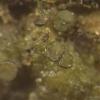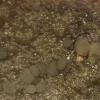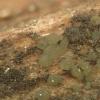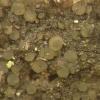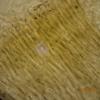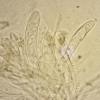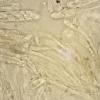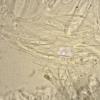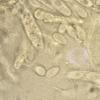
04-04-2025 11:56
 Edvin Johannesen
Edvin Johannesen
These 0.2-0,4 mm diam. flat to slightly convex, gr

03-04-2025 18:26
Lennert GeesHello there!I found this species on dung of an unk

03-04-2025 16:45
Me mandan el material seco de Galicia (España),

01-04-2025 23:18
Yanick BOULANGERBonsoirRécolté par un ami sur dans un tas de bra

29-03-2025 09:08
 Martine Vandeplanque
Martine Vandeplanque
Bonjour.J’ai essayé d’étudier un Daldinia.Qu

30-03-2025 10:24
Gonzalez Garcia MartaGood morning, I would like to know the opinion of

31-03-2025 17:01
akcay mustafa emreHello everyone, My name is Mustafa Emre Akçay, a

30-03-2025 12:41
Me mandan el material seco de Galicia (España), r
Mollisia associated with algae on wood?
Edvin Johannesen,
04-04-2025 11:56
 These 0.2-0,4 mm diam. flat to slightly convex, greeninsh grey apothecia were apparently growing on a thick layer of algae on dead wood (Picea abies). The rim (ectal excipulum) is distinctly darker (greenish pallisade in water, warm yellow in KOH).
These 0.2-0,4 mm diam. flat to slightly convex, greeninsh grey apothecia were apparently growing on a thick layer of algae on dead wood (Picea abies). The rim (ectal excipulum) is distinctly darker (greenish pallisade in water, warm yellow in KOH).Asci ca. 50 x 5 µm, IKI+ (blue without KOH pre-treatment, ring-shaped). Spores ca. 6-8 x 3 µm, biseriate in upper half of asci, ellipsoid or somewhat asymmetrical ("navicular"), mostly with no oil droplets or a few small ones at each end (in water). Paraphyses rather robust, guttulate and appearing "septate".
I am thinking Mollisia, but I have no updated literature/key to the species of Mollisia. Your opinion is appreciated. Thanks!
Hans-Otto Baral,
04-04-2025 21:53

Re : Mollisia associated with algae on wood?
I suppose you have Durella suecica. I know it with dark and light colours.
Edvin Johannesen,
04-04-2025 22:56

Re : Mollisia associated with algae on wood?
That looks like a very good suggestion. Thank you so much!
